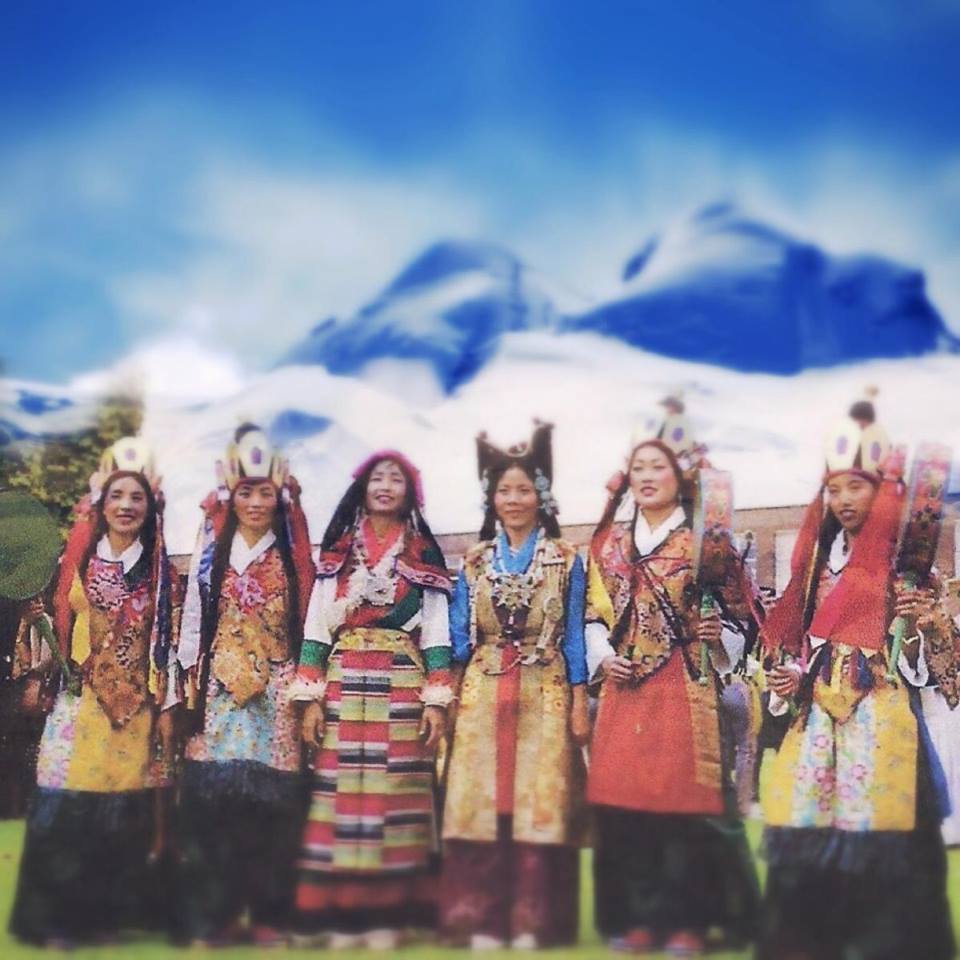Tibetan secular history was preserved and passed on from generation to generation through ritualized dances, which often were accompanied by narration or song. Tsering Wangmo and Vajrayana Foundation collaborated to stage and record the most famous and characteristic work in this form, the Lingdro dance, which tells the history of the 11th century Tibetan King Gesar of Ling.
Among project activities, the collaborators translated the epic’s lyrics into English for the program; commissioned authentic costumes, headgear and shoes from Tibetan and Nepalese tailors; and taught the dances to local young men and women—both Tibetans and Westerners. Members of the Vajrayana Foundation played the musical instruments that accompanied the piece.
The artists performed the work al fresco (open air) in the traditional manner, at Pema Osel Ling, Vajrayana Foundation’s Tibetan Buddhist spiritual center in Watsonville and at the Berkeley Marina on the occasion of the Dalai Lama’s Birthday (July 6, 2014). The performance also was to be webcast and recorded.
Tsering Wangmo, artistic director of Chaksam-pa Tibetan Dance and Opera Company, was born in a Tibetan resettlement camp in South India. She studied traditional Tibetan music, dance, and opera at the Tibetan Institute of Performing Arts in Dharamasala from 1982-89. In 1985, she was fortunate to spend four months learning Lingdro Dechen Rolmo from the only living Lingdro master in exile, Pha Norsang. This new rendering of the Lingdro is meant to bridge the cultural gap between the large community of Tibetan Buddhist practitioners (most of whom are not Tibetan) in Santa Cruz and the Bay Area and the local Tibetan community in exile.
Vajrayana Foundation’s mission is to establish, preserve, and transmit the spiritual, artistic, and cultural traditions of Tibetan Buddhism in the West.

